Paper Planes
S. Prasad
In Part II of our coverage of the uprising in Sri Lanka, S. Prasad situates the GotaGoGama Commune within the cycle of struggles beginning with the Arab Spring, which share a familiar pattern of limits. Considering factors such as class consciousness, geography, elections, and even the "shock of victory," Prasad traces the ceiling beyond which the insurrections of our time seem unable to advance.
Other languages: Français, Português, Español
Revolutions desire men who have faith in them. To doubt their triumphs is to already betray them. It is through logic and audacity that one launches them and saves them. If you lack these qualities, your enemies will have it over you; they will only see one thing in your weaknesses — the measure of their own forces. And their courage will grow in direct proportion with your timidity. —Blanqui
At the start of 2022, Sri Lanka was in the midst of an economic crisis. The response by the government, led by President Gotabaya Rajapaksa, was slow at first, and then inept. Protests began in the countryside among farmers and then spread to the suburbs of Colombo, the capital. On April 9, a mass protest in Galle Face, the heart of Colombo, resulted in a sprawling encampment known as GotaGoGama [Gota Go Home]. The occupations spread as new encampments were set up in Colombo and other cities. Momentum ebbed and flowed for months. On July 9, hundreds of thousands of Sri Lankans flooded the capital, storming and occupying the president's house and a number of government buildings. The president fled. The prime minister’s house was set on fire. The army stood down. On July 13, protesters occupied the prime minister’s office, stormed a television station, and attempted to besiege parliament. The next day the president resigned from exile. On July 20, Prime Minister Ranil Wickremesinghe was elected by parliament to finish Gota’s term as president.1
This concluded Act One of the Aragalaya.2 It is unclear what Act Two will entail. The task today is to make the uprising irreversible. The way ahead is perilous. The outcome is uncertain. The future is unwritten.
The following reflections are intended to be a contribution to the ongoing conversation about the next phase of the Aragalaya, as well as an attempt to clarify the lessons of the experience in Sri Lanka for the coming insurrections elsewhere.
I.
Social revolution becomes possible as the result of a sequence of struggles encountering and overcoming their limits. These sequences tend to unfold in a series of waves, as tactics, watchwords, and forms of organization quickly spread across different countries. Often these waves take place in the midst of global economic turbulence, which creates a similar set of conditions in different parts of the world.
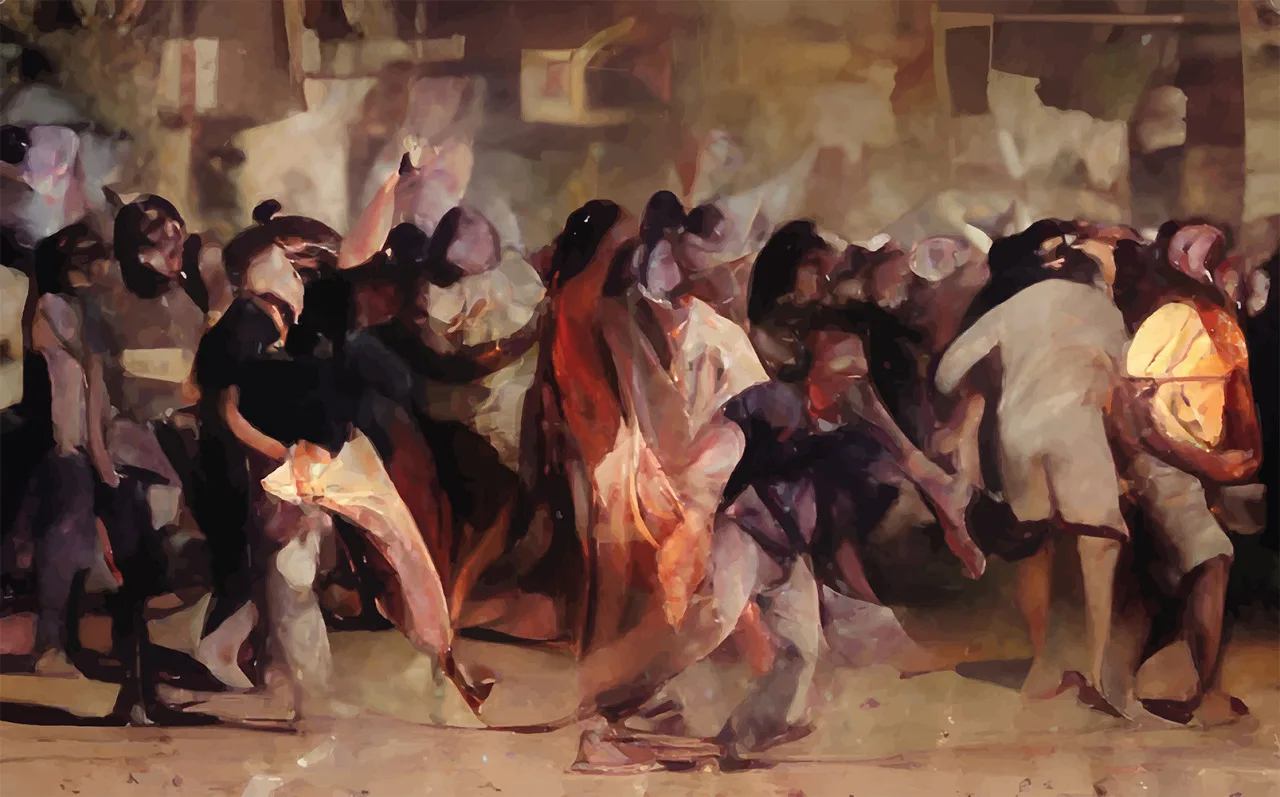

We are in the midst of the sequence of struggles that opened with the Arab Spring. This cycle has been punctuated by two waves: first in 2011, then 2019. The economic turbulence stirred up by the pandemic and the war in Ukraine creates the conditions of possibility for a new global wave of struggle. Already this year there have been protests and riots in nearly a dozen countries triggered by the rising cost of living. The uprising in Sri Lanka has been the most intense and sustained struggle of this year and gives us the clearest indication of the dynamics and limits of what may come next.
II.
For nearly a week, Sri Lanka stood on the tipping point. Many of the major government buildings were occupied, the president had fled the country, the armed forces had stood down. But for the revolution to go further meant the risk of plunging the country into anarchy. It is unclear what conditions will be necessary for struggles to pass this point of no return. But this may be as much a question of ideas as material circumstances. A step into the unknown is always a leap of faith. This is done out of a sense of conviction, when something is believed in so firmly that it seems worth any risk. Navigating the stormy seas without being shipwrecked may also require having a plan. It may be that revolutionaries are needed who can say, with some degree of confidence, how an insurrectionary process can avoid ending up in catastrophe.
III.
Struggles are often defeated not by the state but by the shock of their own victory. Once they have gathered momentum, movements tend to achieve their goals far quicker than anyone would have expected. The fall of the Rajapaksa regime happened so fast that no one seriously considered what would need to follow it. The window it had opened soon closed. The suffocating air of normalcy filled the room.
IV.
An early watchword of the Aragala was all 225 must go, referring to the members of Parliament. It was an echo of the prescient slogan of the 2001 uprising in Argentina: Que se vayan todos — they all must go. In the case of Argentina, the slogan emerged in the midst of an economic crisis not unlike the one currently facing Sri Lanka. Crowds refused to leave the streets until all of the politicians that they blamed for the crisis had been washed away by the wave of unrest. In the course of a month, three different governments were toppled. Today, the Aragalaya is anxious that continuing to demand a clean slate would risk alienating much of the country, and could potentially provoke a descent into chaos. But history teaches that it is precisely through this spreading anarchy that Argentina was able to buy itself some breathing room.3
V.
The Argalaya opposed the formation of an all-party or coalition government following the fall of the Rajapaksas. Only a new form of a power — a People’s Council — could assure that the victories of July 9 were not rolled back. This Council would be made up of representatives of the struggle and would have the power to veto decisions made by the interim government. The proposal recalls what in the early twentieth century would have been called dual power. In the early days of the 1917 Russian Revolution, the Soviet acted as a check on the activity of the Provisional Government, at times overruling its decisions. But dual power reflects a real balance of forces: the Soviet had a real social base and material force behind it. This balance of forces though is always unstable. One power always ultimately prevails and suppresses the other. In this way, dual power cannot be separated from the question of insurrection.
VI.
Once an uprising is underway, any election will only confer legitimacy on the old regime, wrapping it in the legitimacy of the revolution. The election of Ranil by Parliament on July 20 offered an exemplary case of this general rule. There is no reason to believe a general election, something desired by many participants in the Aragalaya, would proceed much differently.
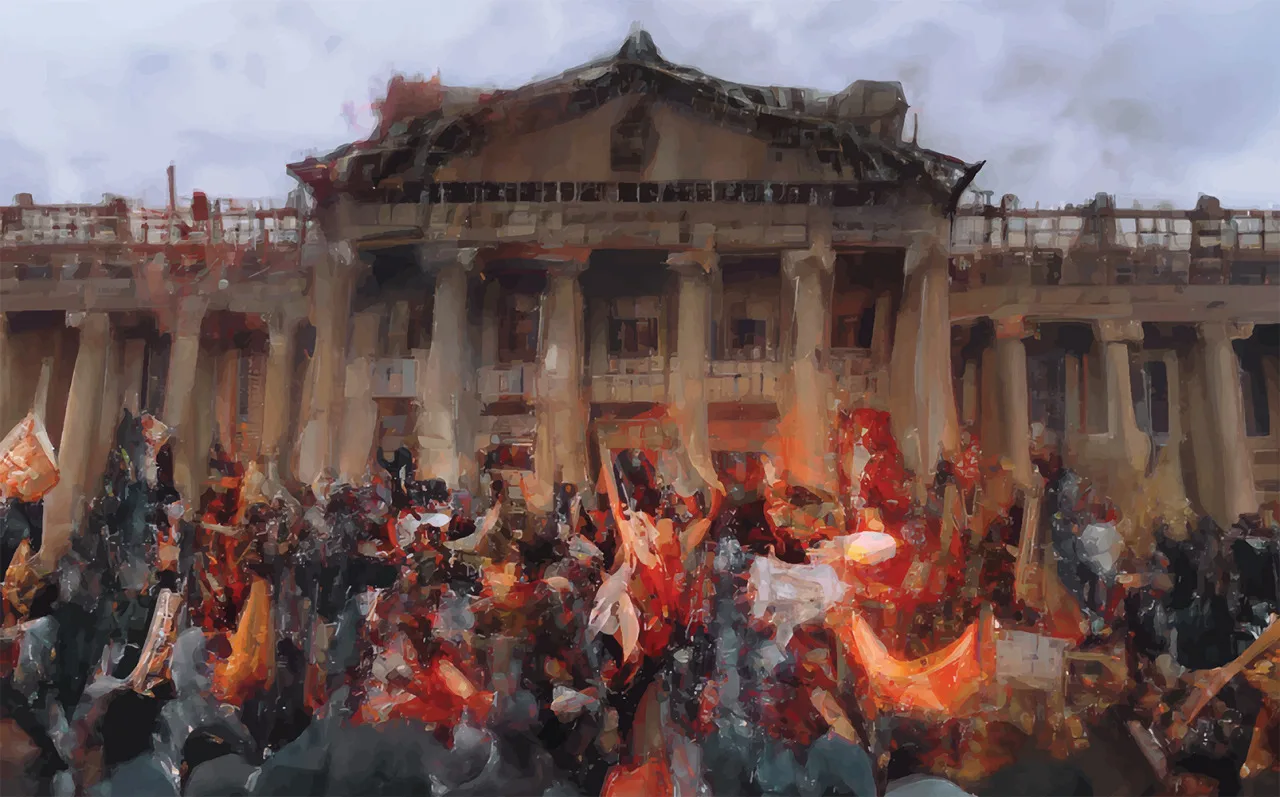
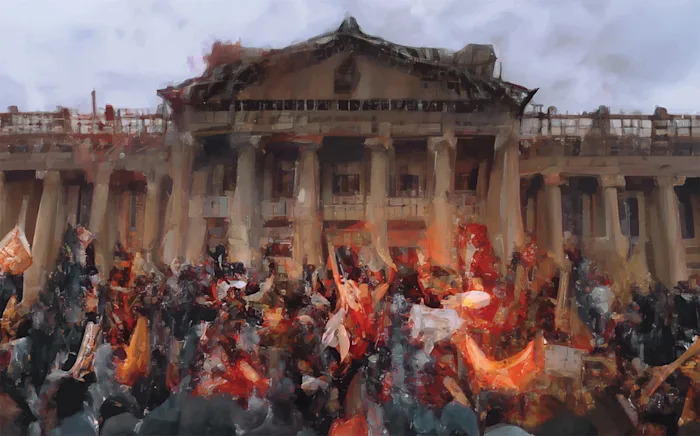
Recently, Ben Ali and Mubarak fled their countries in the face of popular protests. In Tunisia and Egypt, what was referred to as a “constitutional process” was in fact a means for ruling parties to reshuffle the pack while averting any decisive break. In holding elections at great speed, the new government wins on two counts. On the one hand, it establishes a fragile legitimacy that it cannot be sure of enjoying while it is still self-proclaimed. It shows that its intentions are pure, that it does not intend to hang on to power. On the other hand, it prevents “extremists” from using the time they need to spread their ideas. After February 1848, Blanqui had these fears in mind when he called for the elections to be postponed, whereas the provisional government was determined to force the pace. Blanqui was able to force at least a temporary postponement when one hundred thousand armed proletarians marched on Parliament.
VII.
A political, rather than military, defeat of the armed forces is possible. But its conditions of possibility need to be rethought for our century. A revolutionary situation opens up when the armed forces are called into the street but refuse to fire on the crowd.Such a situation occurred on July 9 when the army eventually stood aside as crowds forced their way into the Presidential Palace and Secretariat. However, what often happens is that the same armed forces that stood down during the initial uprising reemerge later as the final arbiter of the fate of the revolution, ensuring a continuity between the old regime and what comes after. After the July 20 elections restored some measure of legitimacy to Ranil’s presidency, the armed forces stormed and evicted the Secretariat, the last occupied government building. The revolutions of our century have largely occurred in countries where the military functions as a dual state. Revolutions in Egypt and Sudan were brought to an abrupt halt when the military took power in a coup. This may be less likely to occur in Sri Lanka where, despite its long civil war, the military does not have a history of operating as an independent political and economic force. But the revolution in Sri Lanka faces another risk. Countries that have been torn apart by civil war, such as Sudan and Myanmar, have seen the violence that spread throughout the periphery during those wars return to the center during the uprising. If things continue to escalate, this is one possible fate of the revolution in Sri Lanka.
VIII.
Struggles find their strength in their capacity to weave together different fragments of the proletariat. The uprising was only successful because, across the entire country, people from all walks of life and communities found their own way to participate. This is particularly important in a society like Sri Lanka, founded on ethnic and religious separations and riven by decades of civil war. These tensions were brought to the fore once again in the aftermath of the 2019 Easter bombings. By contrast, the Aragalaya understands itself to be the first movement to bring together Sinhalese Buddhists, Tamils, and Muslims in a struggle against the state. The struggle also brought together farmers, fishermen, students, tuk tuk drivers, the traditional left, and various opposition parties. Buddhist monks cohabited with Catholic priests and queers; downwardly mobile professionals fought alongside the urban poor, Indian immigrants working hand in hand with the former supporters of nationalist parties. However, the separations present in the rest of society tend to reemerge within the struggle, especially after its early successes. This has been a limit the revolutions of our century have been unable to overcome.
IX.
Anti-austerity struggles tend to adopt a critique of corruption as a spontaneous ideology. In a world increasingly dominated by authoritarian strong men, this makes a certain kind of sense, and particularly in Sri Lanka, given the way the Rajapaksa clan has dominated politics in recent decades. At the same time, critiques of corruption misrepresent the agency the state actually has within economic and social crises, since it presumes that the state could find a way out of the present crisis, that it could choose to avoid implementing austerity, if it only wanted to. This confusion is also why anti-austerity struggles tend to result in a reshuffling of the deck rather than changing the game. After the fall of the regime, people are confronted with the fact that the structural logic of capitalist society remains in place. Governments ushered in by the revolution often find themselves implementing austerity measures similar to the ones that had initially triggered the protests.
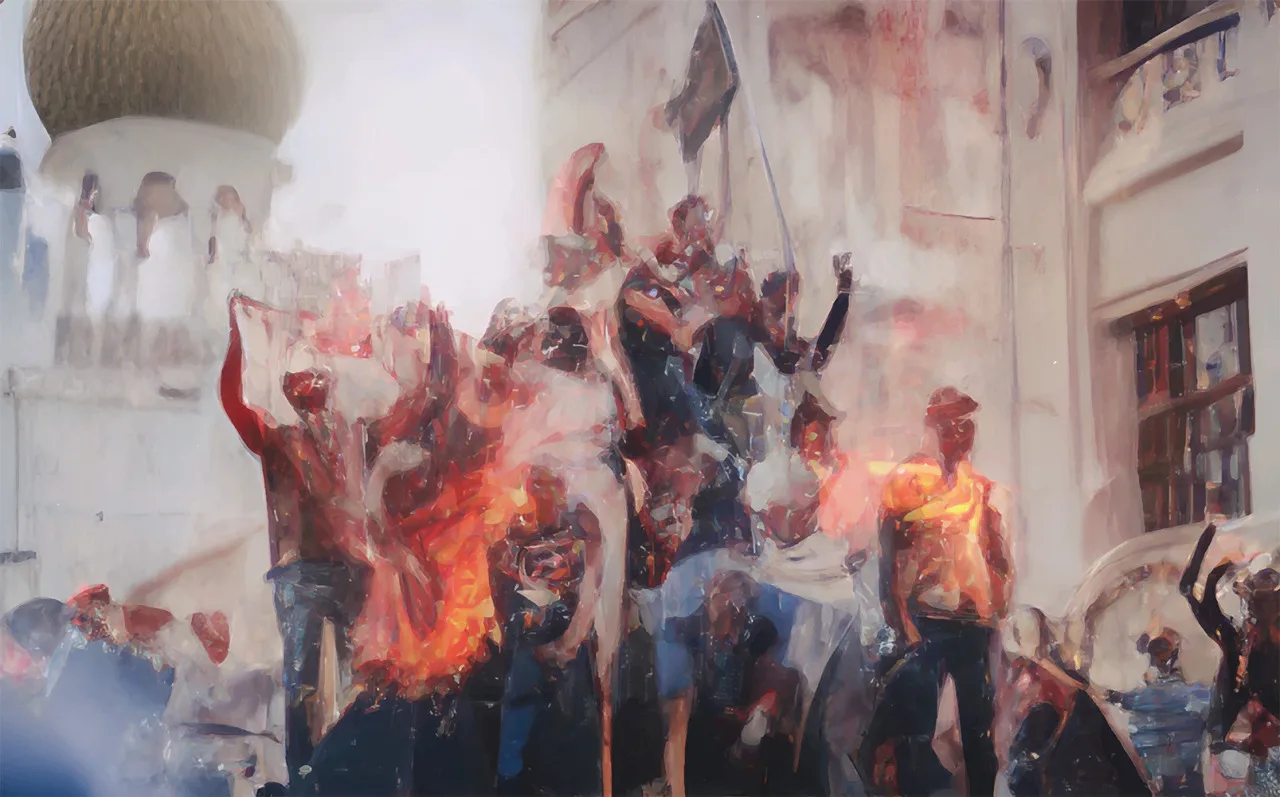
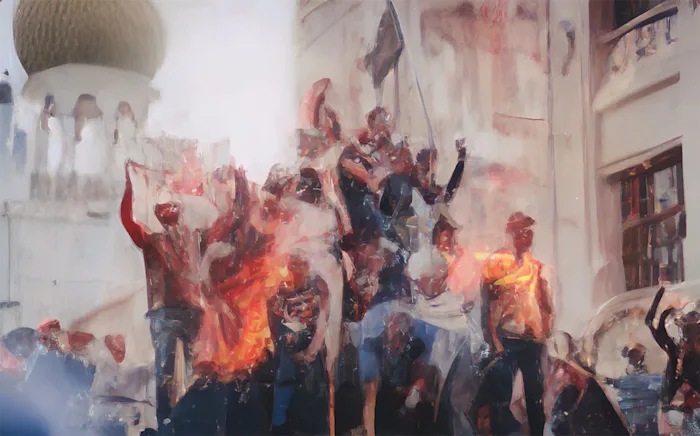
This may be a necessary step on the way to a more systemic critique. Organizers in the Aragalaya talked about this as the development of class consciousness. After the July 20 election, it was plain for everyone to see the essential unity of interests of the ruling class. However, it might be accurate to think of this as developing a consciousness of capital. For the uprising to have gone further, it would have had to confront the uncertainty of how the country would eat and live while its relationship to the global market was interrupted. After all, it is only through and within the relations of capitalist society that proletarians are able to reproduce themselves at all. This is precisely the limit, and what is called into question, by struggles today.4
X.
Uprisings are often set in motion by the struggle of a particular social group. However, as the geographic center of a struggle shifts, changes in the class composition tend to follow. As protests move towards the major cities, the urban middle classes initially become the center of gravity. For example, the uprising in Sri Lanka first began as farmers’ protests in the rural hinterland, then shifted to the suburbs surrounding Colombo, then to the heart of the capital. There, urban middle classes initially played an important role, especially in the occupations. As the protests and occupations took on even more momentum, Colombo was then swarmed by proletarians from around the city and country, most notably on July 9. After reaching the capital, protests began to spread throughout the whole country, even as the capital maintained a certain centripetal pull. This geographic concentration can make it harder to assure the participation of minority populations, such as Tamils who are concentrated in the north and east of the country.
At the same time, the geography of struggle does not map neatly onto the geography of power. Some of Sri Lanka’s revolutionaries argue that the next phase of the struggle will need to decenter Colombo and distribute activity throughout the country. This raises the question of what it would actually look like to take and hold onto power, and thus what the cartography of a future insurrection might entail.5 By occupying the halls of power, the Aragalaya understood itself as having, in a sense, taken power. But the state simply continued to function behind their backs. This was perhaps a necessary step in the revolution, but inadequate for making it irreversible. To some, power resides in infrastructure, the “physical organization of society that constitutes its real power.”6 But what infrastructure, and what would it mean to occupy and repurpose, rather than simply block it, especially in the midst of economic breakdown and potential catastrophe?
XI.
Uprisings tend to be followed by a process of getting organized, as militants shaped by the wave of struggle find each other and develop ways to prepare for the struggles to come. Sri Lanka has the benefit of a decade of recent experiments elsewhere on the globe to draw upon. Perhaps most potent is the experience in Sudan. After an uprising in 2013, a proliferation of resistance committees emerged that set themselves the task of preparing for the next wave of struggles. Specifically, this meant: maintaining neighborhood social centers; building the infrastructure and stockpiling materials that they thought would be necessary; developing city-wide and national networks of comrades and sympathizers; and testing the capacity of these networks through coordinated campaigns. When the revolution did come, in late 2018, these groups were able to act as vectors of intensification. The resistance committees were also able to sustain the revolution into its next phase, after President Al-Bashir was forced to step down.7
This sequence of struggles has also generated experiments not worth emulating.Mass movements are often followed by a push to form political parties capable of contesting elections, such as in Greece or Spain. Their early successes tend to conceal a certain trap. As the crisis gets deep enough, the state and capital want to push the weight of governing on to movements. There is no way out of the crisis, so movements become responsible for managing it. Once the movement is in power, it quickly becomes discredited. At times, the left is even able to push through reforms or austerity that another government would not be able to. Within this cycle, revolutionaries have discovered the form adequate to intervene in struggles but not to take power.
XII.
The crisis cannot be solved in Sri Lanka alone. With a shortage of food, fuel, cash, and other basic commodities, help in some form will need to come from outside of the island. For now, the only assistance available comes in the form of an emergency bailout from the IMF and aid from countries such as China and India. An IMF bailout is like being thrown a life preserver while stranded in the middle of an ocean. It may offer temporary reprieve, but it is no solution and certainly doesn’t guarantee survival. It simply ensures more of the same: struggling to keep one’s head above water.
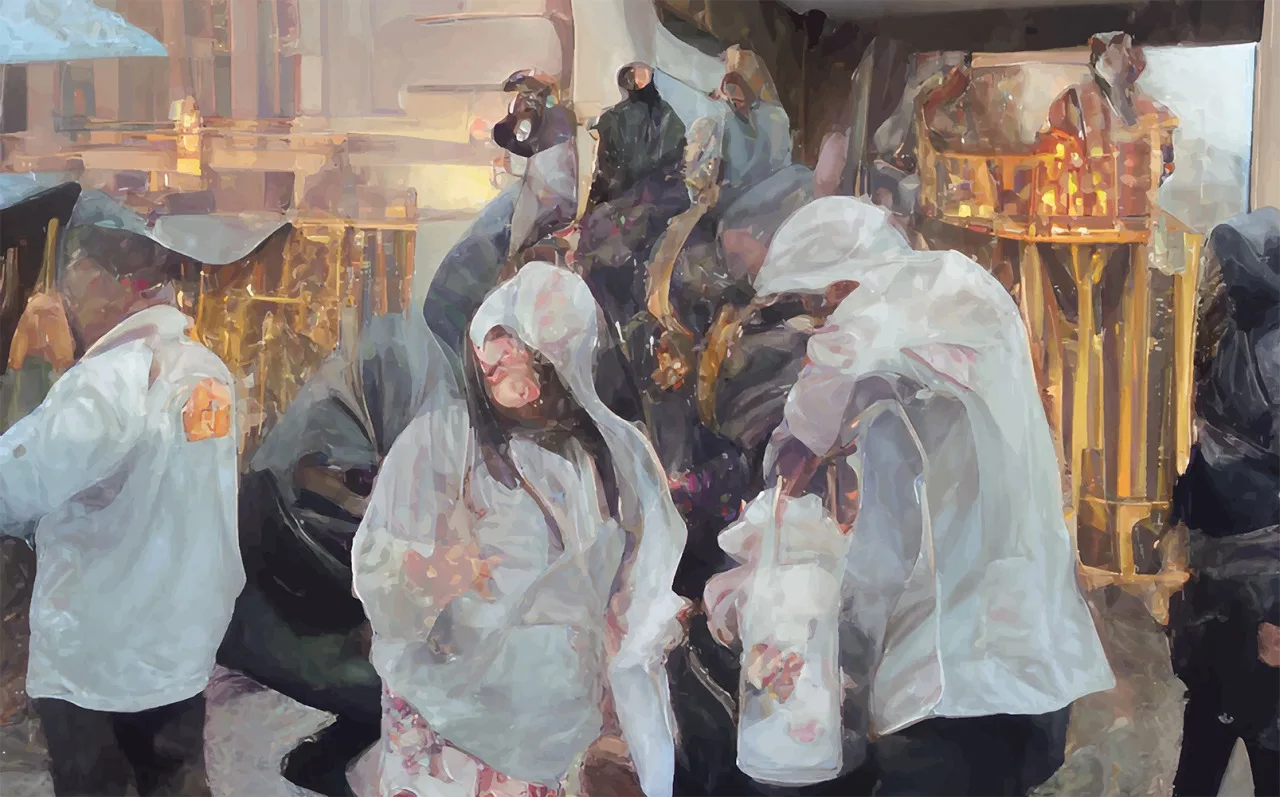

Revolutionary endeavors of today begin in isolation, abandoned to repression because it is not in the interest of any existing power to support them. The sporadic explosions of revolutionary contestation are countered by an international organization of repression, operating with a global division of tasks. So far, no practical organization of revolutionary internationalism exists to support the movement in Sri Lanka. Yet it is only through the deepening of this sequence of struggles, and within the constellations of forces that might emerge from it, that a practical internationalism, one capable of breaking the isolation of revolutionary endeavors, may become possible.8
XIII.
Revolutions always find a form adequate to their content and their situation. In GotaGoGama and the proliferation of occupations that radiated out from it, we glimpse the emerging outline of what some have begun to call the Galle Face Commune. The commune provides a possible basis for the social revolution. The commune can be seen in the practices with which the movement cares for and reproduces itself; in its efforts to overcome the separations of capitalist society; and in its tendency to expand. With each step forward in the struggle, the occupations movement expanded: the encampment in Galle Face grew, new encampments sprung up, new buildings were occupied. Some protesters complained about the protests being characterized as a beach party in the media. But the declaration of the commune is always marked by a festival.
The occupations provide the space and context for participants to find each other, get organized, and take initiative. They provide the infrastructure necessary for the movement to reproduce itself; to treat water during the lulls; and to rise with the tide, absorbing the momentum of more intense moments of unrest. It may always be easier to hold onto these spaces than it is to retake them. Lightning rarely strikes twice. Revolutionaries in Egypt and Sudan learned this the hard way.
The life in common that was attempted in Galle Face Greene, in tents, in the cold, in the rain, surrounded by police under the dreariest of Colombo’s towers, was definitely not a full rollout of the vita nova — it was just the point where the sadness of metropolitan existence began to be flagrant.
Even if the last occupations are cleared, that does not mean the commune has been eradicated. It should be remembered that the soviets first appeared in the 1905 revolution, only to reemerge in 1917.
All power to the communes.
August 2022
Images: Muvindu Binoy
Notes
1. For a more in-depth timeline of the uprising, see “Dispatches from Sri Lanka,” Ill Will, August 10, 2022. Online here.↰
2. The Sinhalese word for Struggle.↰
3. See David Graeber, “The Shock of Victory” (2008). Online here. ↰
4. See Endnotes, “L.A. Theses” (2015). Online here.↰
5. On the geography of insurrection, see “The Kazakh Insurrection,” Ill Will, Feb 23 2022. Online here.↰
6. Invisible Committee, “Spread Anarchy, Live Communism.” Online here. ↰
7. For more on Sudan, see “Theses on the Sudan Commune,” Ill Will, April 16 2021. Online here.↰
8. For more on this, see “The Kazakh Insurrection.”↰